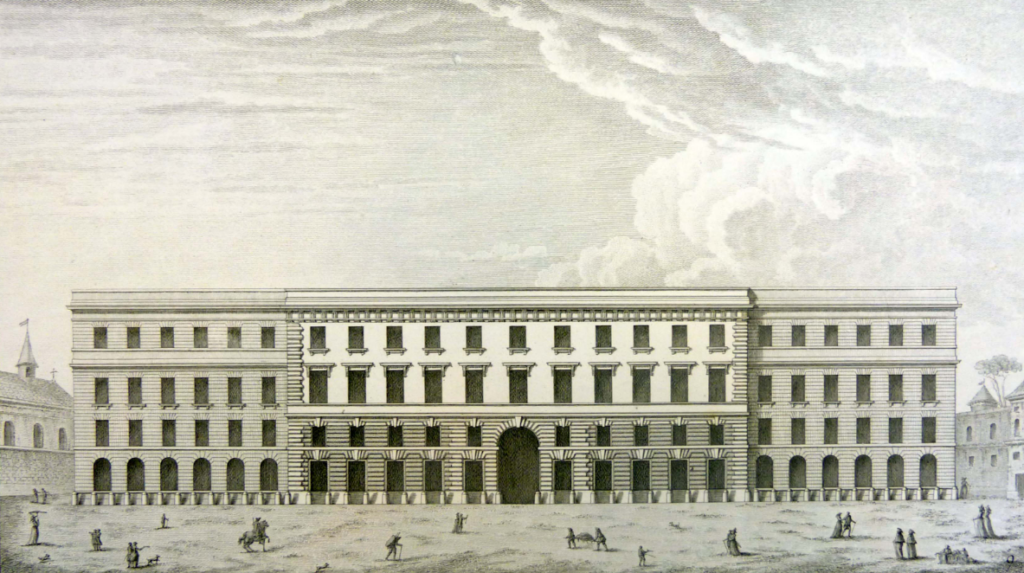Institutional
History
Over the centuries, the words of its founder, Théophraste Renaudot, have guided the institution: "Experience has taught us that in the affairs of life, a timely help has all the importance of a treasure".
Since its creation in 1637, Crédit Municipal de Paris has witnessed 400 years of Parisian history. Faithful to the social mission it has always pursued, the bank's pawnbroking and budget support services provide a concrete, lasting solution for people in financial difficulty.
At the same time, Crédit Municipal de Paris has developed a range of excellent services for the conservation and enhancement of precious works and objects. Through its patronage policy and its support for artistic creation, the institution has affirmed its role as a key player in the cultural life of Paris.
1637: France's very first Mont-de-Piété
Théophraste Renaudot, physician to Louis XIII, philanthropist and friend of Richelieu, was appointed Commissaire aux pauvres du royaume in 1619. On March 27, 1637, the King authorized him to open a Mont-de-Piété in Paris. In 1643, Louis XIII allowed 58 towns to establish Monts-de-Piété. After the deaths of Richelieu and Louis XIII, Théophraste Renaudot lost his main supporters. His enemies - the usurers, the Faculty of Medicine and the Parliament of Paris - demanded the closure of the establishment. On March1, a ruling by the Parliament put an end to the institution. For over a century, usurers ruled the capital. Rates of up to 120% per annum were charged!
Definitive installation of the institution
On December 9, 1777, Louis XVI re-established the institution with letters patent, at the instigation of Jean-Charles-Pierre Lenoir, Lieutenant General of Police in Paris. Framboisier de Beaunay, advisor to the King and drafter of the letters patent, was appointed the institution's first director. The Mont-de-Piété de Paris officially opened on February 9, 1778, at the address it still occupies today.
During the French Revolution, upheavals in the internal organization, combined with the political and social climate, weakened the establishment. It was forced to close in 1795, but was not officially suppressed. Paris became overrun with pawnshops. The Seine authorities decided to restore the Mont-de-Piété, which reopened in 1797 and never closed again. Parisians, warned by posters, flocked to it.

The pawnbroking monopoly
By 1800, confidence had returned. The first branch specializing in the pledging of precious objects opened on rue Vivienne. On February 6, 1804, Napoleon Bonaparte granted Mont-de-Piété a monopoly on pawnbroking.
The Mont-de-Piété experienced a period of contrasts in the 19th century. In response to strong demand from Parisians, it multiplied the number of auxiliary offices, but at the same time experienced internal dysfunction in a complex political and economic context.
He orchestrated numerous "free releases" which have continued ever since.
From Mont-de-Piété to Crédit Municipal de Paris
By the beginning of the 20th century, business was in decline, and the institution had to evolve to provide new solutions to the financial difficulties of Parisians. On October 24, 1918, Mont-de-Piété became Crédit Municipal de Paris, a new name that also heralded the development of its banking activities, alongside pawnbroking.
Crédit Municipal de Paris' activity slowed considerably during the Second World War. The decline continued into the 1950s, and the bank decided to diversify its activities. Under the French Finance Act of June 11, 1954, the caisses de Crédit Municipal were among the first establishments to offer credit to the French public, particularly civil servants. The Banking Act of January 24, 1984 recognized Crédit Municipal de Paris as a fully-fledged banking institution. From 1987 onwards, the Parisian institution set up a network of local branches in Paris and the Île-de-France region. This banking activity will cease in 2015.
In 1988, an art storage department is opened. Renamed CC ART in 2018, this department combines expertise in the conservation of rare and precious objects, from transport to packaging, right through to restoration with a network of partner restorers. This invaluable know-how irrigates all of the establishment's conservation services, in particular the pawnbroking storage services.
In 1992, the establishment came under the responsibility of the City of Paris.
A facility adapted to new uses and needs
In 2008, a budget support service was launched, which in 2023 became Parcours Budget. This service, unique in the Paris region, is completely free of charge and offers help and solutions to people in financial difficulty.
In 2018, Crédit Municipal de Paris launched the Livret Paris Partage, a doubly solidarity-based savings product that supports the bank's social activity while allowing interest to be donated to associations.
In 2022, the bank will adopt the Héraklès strategic plan, continuing the modernization efforts of the previous strategic plan. With this ambitious action plan, Crédit Municipal de Paris is asserting its position as an institution at the service of all publics, and at the heart of tomorrow's social and socially responsible finance.